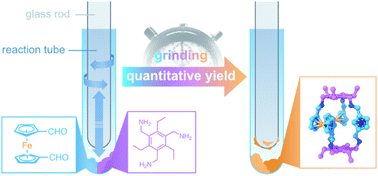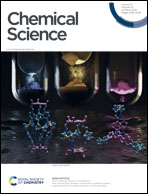Fast, solvent-free synthesis of ferrocene-containing organic cages via dynamic covalent chemistry in the solid state†
Abstract
A simple, solvent-free synthetic protocol towards the synthesis of organic self-assembled macromolecules has been established. By employing mechanochemistry using glassware readily available to every organic chemist, we were able to synthesise three novel organic cage compounds exemplarily and to speed up the synthesis of a ferrocene-containing macrocycle by a factor of 288 compared to the solution-based synthesis. The structural investigation of the newly synthesised cages revealed different modes of connectivity from using ferrocene-containing aldehydes caused by the free rotation of the cyclopentadienyl units against each other. By extending the facile solvent-free synthesis to ball-milling, even compounds that show lower reactivity could be employed in the dynamic covalent formation of organometallic cage compounds. The presented protocol gives access to otherwise inaccessible structures, speeds up general synthetic workflows, and simultaneously reduces the environmental impact of supramolecular syntheses.



 Please wait while we load your content...
Please wait while we load your content...